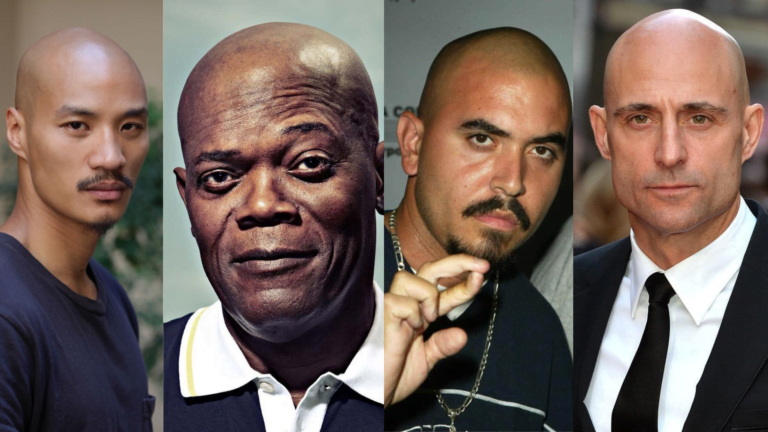Questions about the lifespan of our precious locks and their connection to the perplexing phenomenon of baldness have always stirred curiosity.
As we delve into this intricate topic, we aim to unravel the mysteries surrounding the decomposition of human hair and its potential correlation with baldness. Brace yourself for an enlightening journey through the intricate strands that make up our crowning glory.
The Lifespan of Human Hair: An In-depth Exploration
Anatomy of a Strand
Before we plunge into the topic of hair decomposition, it’s imperative to comprehend the intricate anatomy of human hair. Each strand undergoes a fascinating life cycle, comprising three primary phases: Anagen, Catagen, and Telogen.
The Anagen phase marks active growth, Catagen is a transitional stage, and Telogen represents the resting phase. Understanding this cycle lays the foundation for comprehending the eventual fate of our hair.
The Natural Shedding Process
Contrary to common belief, shedding hair is a natural and ongoing process. On average, an individual loses approximately 50 to 100 hairs per day.
This occurs as part of the Telogen phase, where old hairs naturally make way for new growth. This shedding process is not linked to decomposition but is a vital element of the hair renewal cycle.
Read Also: Why Are Zombies Bald?
Decomposition of Human Hair: Unraveling the Process
Environmental Factors and Decomposition
Human hair, composed primarily of keratin, is remarkably resilient. Its resistance to decomposition is influenced by various factors, including environmental conditions and microbial activity.
In optimal conditions, hair has been known to persist for years without significant degradation. The outer cuticle, acting as a protective layer, plays a pivotal role in resisting decomposition.
Decomposition in Different Environments
The fate of shed hair depends significantly on the environment it finds itself in. In dry environments, hair may endure longer due to the scarcity of moisture, whereas in humid conditions, microbial activity may hasten decomposition. Understanding these nuances is crucial in demystifying the longevity of human hair post-shedding.
The Intricate Link Between Hair Decomposition and Baldness
Genetic Predisposition to Baldness
Baldness, medically known as alopecia, is a complex condition influenced by a myriad of factors. While hair decomposition is not directly linked to baldness, understanding genetic predispositions is paramount.
Individuals with a family history of baldness may be more susceptible, pointing towards a genetic component in this intricate puzzle.
Hormonal Influences and Hair Loss
Hormones, the messengers of the body, also play a pivotal role in the hair loss equation. Dihydrotestosterone (DHT), a byproduct of testosterone, has been identified as a key player in male and female pattern baldness.
Understanding the hormonal triggers allows for a more nuanced perspective on the intricate dance between hair growth and loss.
Conclusion
In our quest to answer the intriguing question, “Does human hair decompose, and is it linked to baldness?” we’ve navigated the complex realms of hair anatomy, decomposition processes, and the multifaceted factors contributing to baldness.
While hair shedding is a natural and ongoing phenomenon, the longevity of decomposed hair is subject to various environmental variables.
As we conclude this exploration, it becomes evident that no direct link exists between hair decomposition and baldness.
Baldness, or alopecia, is a complex condition influenced by genetic predispositions and hormonal factors. While shedding is a natural process, baldness is more intricately tied to one’s genetic makeup and hormonal balance.
Does hair continue to grow after it falls out?
No, once a hair strand falls out during the Telogen phase of the hair growth cycle, it does not continue to grow. The shedding is a natural part of the renewal process, making way for new hair growth.
How long does it take for human hair to decompose?
The decomposition of human hair is influenced by environmental factors. In optimal conditions, it can persist for years without significant degradation. Dry environments may prolong its existence, while humid conditions could expedite decomposition due to microbial activity.
Can hair care products affect the decomposition of hair?
Certain hair care products may leave residues on the hair, affecting its interaction with the environment. However, the impact of typical hair care products on the decomposition process is minimal. Environmental conditions and individual factors play more significant roles.
Does hair color affect decomposition?
The decomposition of hair is primarily influenced by its structural composition rather than its color. Regardless of color, hair is composed of keratin, which contributes to its resilience against decomposition.
Are there environmental concerns related to hair decomposition?
In general, hair decomposition is a natural process and poses minimal environmental concerns. Unlike synthetic materials, human hair is biodegradable and does not contribute significantly to environmental pollution.






